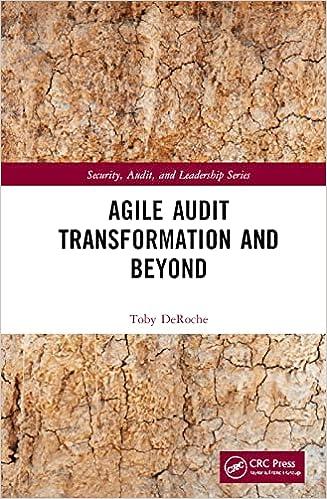Question
Susan Prescott is the senior analyst responsible for the company's new bottled water product. She and her assistant have worked on this project for two
Susan Prescott is the senior analyst responsible for the company's new bottled water product. She and her assistant have worked on this project for two weeks and have completed the profit plan, which she will present to the manager of the financial planning department. The first page of the long and detailed presentation shows the summary income statement for the Waterpure profit center for the year 2003 (Table 1)
Susan has kept her manager, Elizebeth, informed regarding the process of the plan. As it is quite common during a corporate plan cycle, the final discussion has been delayed several times due to late data, changed numbers, and missed schedules. Plus, Susan and Dorothy are meeting just one day before the results are to be presented to the companys controller. Dorothy agrees with the method with which the plan has been put together and with the results Susan has presented. But she expects that the controller will require additional information. She asks Susan whether she has performed a sensitivity analysis calculating profit results if sales were to be 10% lower or 10% higher than planned. She is also interested in the level of sales of which profit will be zero to establish the worst case and of which profit will be $1,600,000.
Susan admits that this analysis is incomplete due to lack of time. Since the presentation must be ready the next day, there is not enough time to rework the complete plan to obtain the alternative results. Susan will therefore have to devise a method by which she can obtain some good estimates for the what-if cases, estimates sufficiently reliable to show the controller. She remembers that in graduate school, she learnt a method called break-even or cost-volume-profit analysis. Fortunately she happens to have a few old books in her office.
 Susan needs to make estimates of price per unit, average variable cost and total fixed cost. She had the production figure and price per case of $5. Breaking up the cost and expense numbers into fixed and variable components was a much more difficult task. Working with her assistant, she arrived at the following estimated breakdown for Best estimate:
Susan needs to make estimates of price per unit, average variable cost and total fixed cost. She had the production figure and price per case of $5. Breaking up the cost and expense numbers into fixed and variable components was a much more difficult task. Working with her assistant, she arrived at the following estimated breakdown for Best estimate:

Help Susan to:
-
Transform the Traditional Income Statement shown in Table 2 into a Contribution Income Statement.
-
Calculate the unit contribution margin.
-
Perform a sensitivity analysis calculating profit results if sales were to be 10% lower or 10% higher than planned.
-
Calculate the level of sales of which a. Profit will be zero to establish the worst case b. Target profit will be $1,600,000
-
Fill out Table 2 showing the planned figures, the two 10 percent variations, the worst case and the $1,600,000 target profit.
TABLE 1 INCOME STATEMENT FOR "WATERPURE PROFIT CENTER PLAN FOR 2003 ($000) $5,000 800 1.000 950 Sales Cost of sales Materials Labor Overhead Total cost of sales Gross profit Selling and administrative expenses Research and development expenses Total expenses Net earnings before taxes 2,750 2,250 1,150 300 1,450 $800 TABLE 2 INCOME STATEMENT FOR WATERPURE PROFIT CENTER ALTERNATIVE PLANS FOR 2003 ($000) Best Estimate +10% -10% Worst Case Target profit Quantity Sales Cost of sales $5,000 Variable mat & labor 1,800 Variable overhead 500 Fixed overhead 450 Total cost of sales 2.750 Gross Profit 2,250 Expenses Variable selling & admin Fixed selling & admin 450 700 Fixed research & develop 300 Total expenses 1.450 Net earnings before taxes $800
Step by Step Solution
There are 3 Steps involved in it
Step: 1

Get Instant Access to Expert-Tailored Solutions
See step-by-step solutions with expert insights and AI powered tools for academic success
Step: 2

Step: 3

Ace Your Homework with AI
Get the answers you need in no time with our AI-driven, step-by-step assistance
Get Started


